Woodworking at Complexul National Muzeal ASTRA (RO)
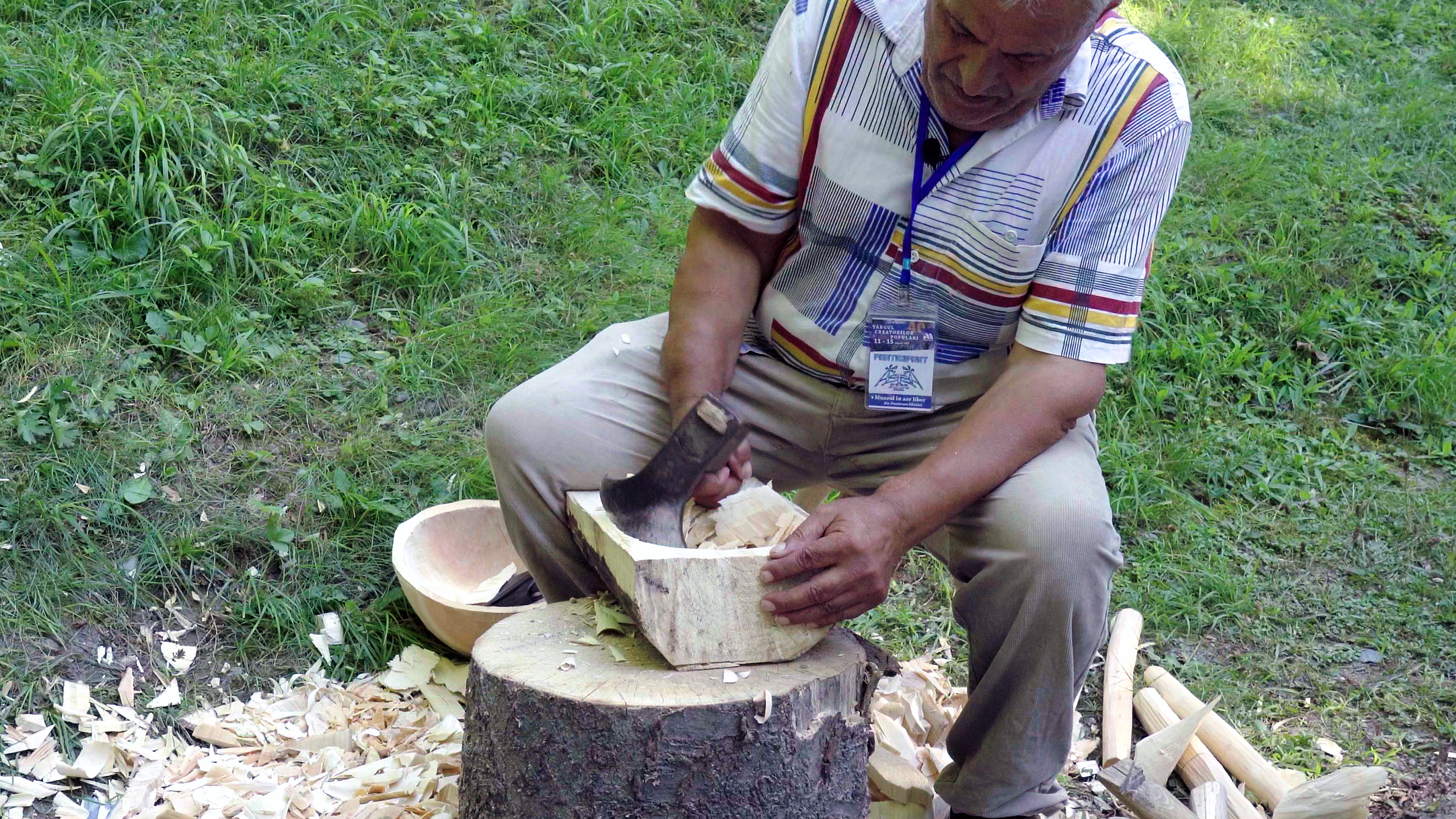
Name of the craft in English: Woodworking
Name of the craft in local language: Prelucrarea lemnului
Local Language: Romanian
Type of craft: Traditional (craft is still practised)
Category of craft: Wood and furniture crafts
Short description of the craft:
Production of a wide range of different wooden household items. The importance of this craft lies in the fact that the items produced and used daily in the kitchens of today are a healthy and sustainable alternative to the different industrial materials such as plastic. For the museum, these types of household items, made a long time ago, are an important part of the collection, and are part of all the households exhibited.
What is the historical /archaeological time period of the original craft:
Roman Era, Viking Age, Early Middle Ages, Late Middle Ages, Newer Era, 1930-1950, Newest Era
What years was/is the craft practiced: 1000 BC - 2024 AD
Primary crafter: Ioan Drăgan (RO)
Crafter's role in the documentation process: Daily occupation (more focussed on the craft and the result, less on the public)
The crafter has been practicing this craft for: More than 20 years
Is practicing this craft the main occupation of the crafter: Yes
Does the crafter practice any other crafts: No
The crafter's motivation for learning this specific craft: To earn (part of) a living
Does the crafter have regular contact with colleagues: Yes
Number of colleagues: 10
Which describes the crafter's habitual working area best: Urban Workshop
How did the crafter learn this craft: From one or more persons (informal)
Please provide the context: From a family member
Does the crafter teach this craft: Yes
Where / how the crafter teaches: The crafter teaches one or more persons (informal)
This process is: To produce something from scratch
Which of these options best describes the work area during this craft activity: Urban workshop
Name each working technique (keyword):
• Cut, split, carve, finish • split • carve • chisel • finish
Phase 1
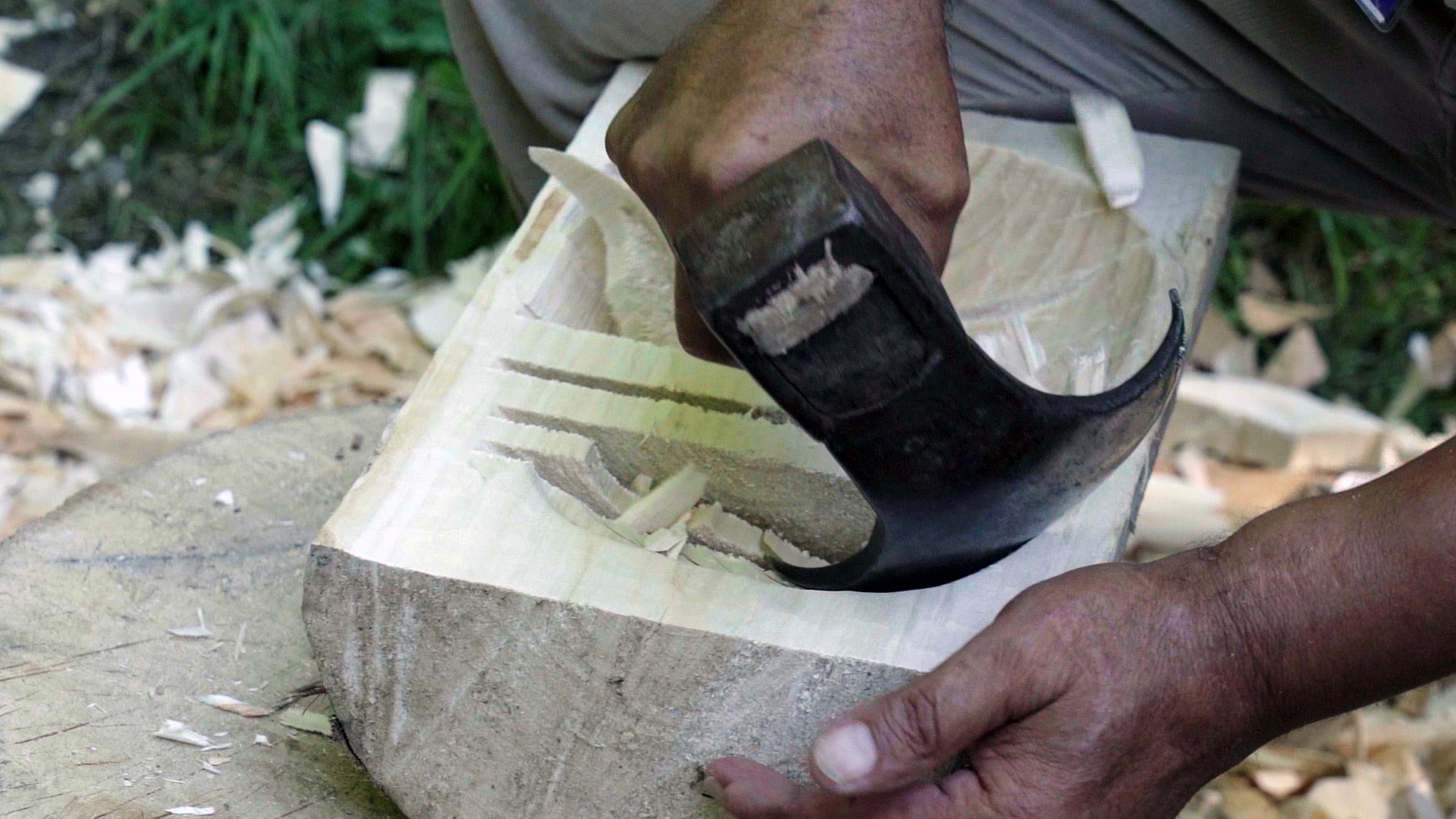
Number and name of the phase:
1. Carve the inside
Description of this phase:
Carve with the adze.
Time: 15 min
Tools used in this phase:
Adze
Materials used in this phase:
Soft wood freshly cut (willow, linden tree, acacia)
Phase 2
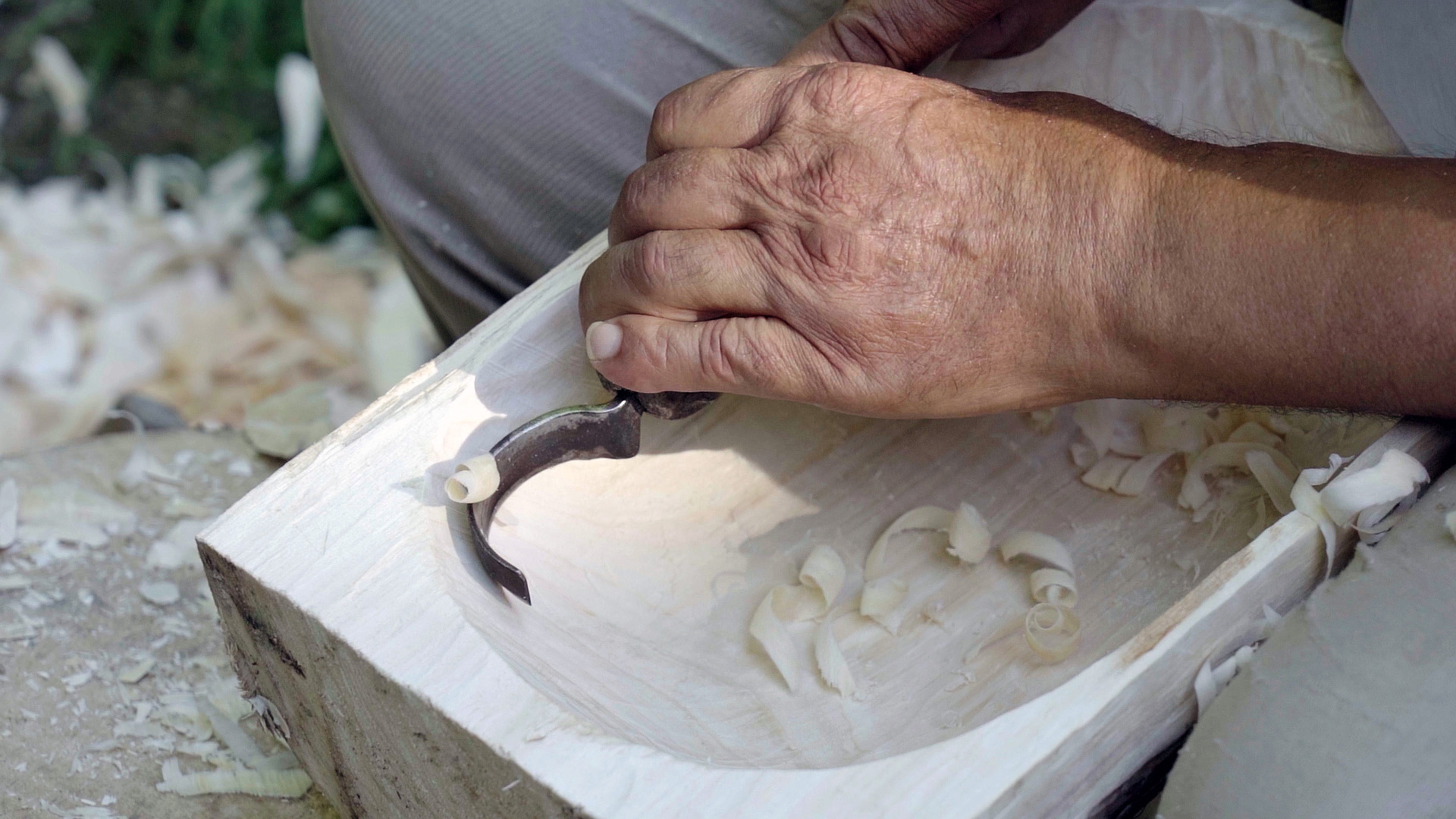
Number and name of the phase:
2. Finish the inside
Description of this phase:
Finish the inside with the bend blade carving chisel
Time: 15 min
Tools used in this phase:
Bent blade carving chisel
Materials used in this phase:
Soft wood freshly cut (willow, linden tree, acacia)
Phase 3
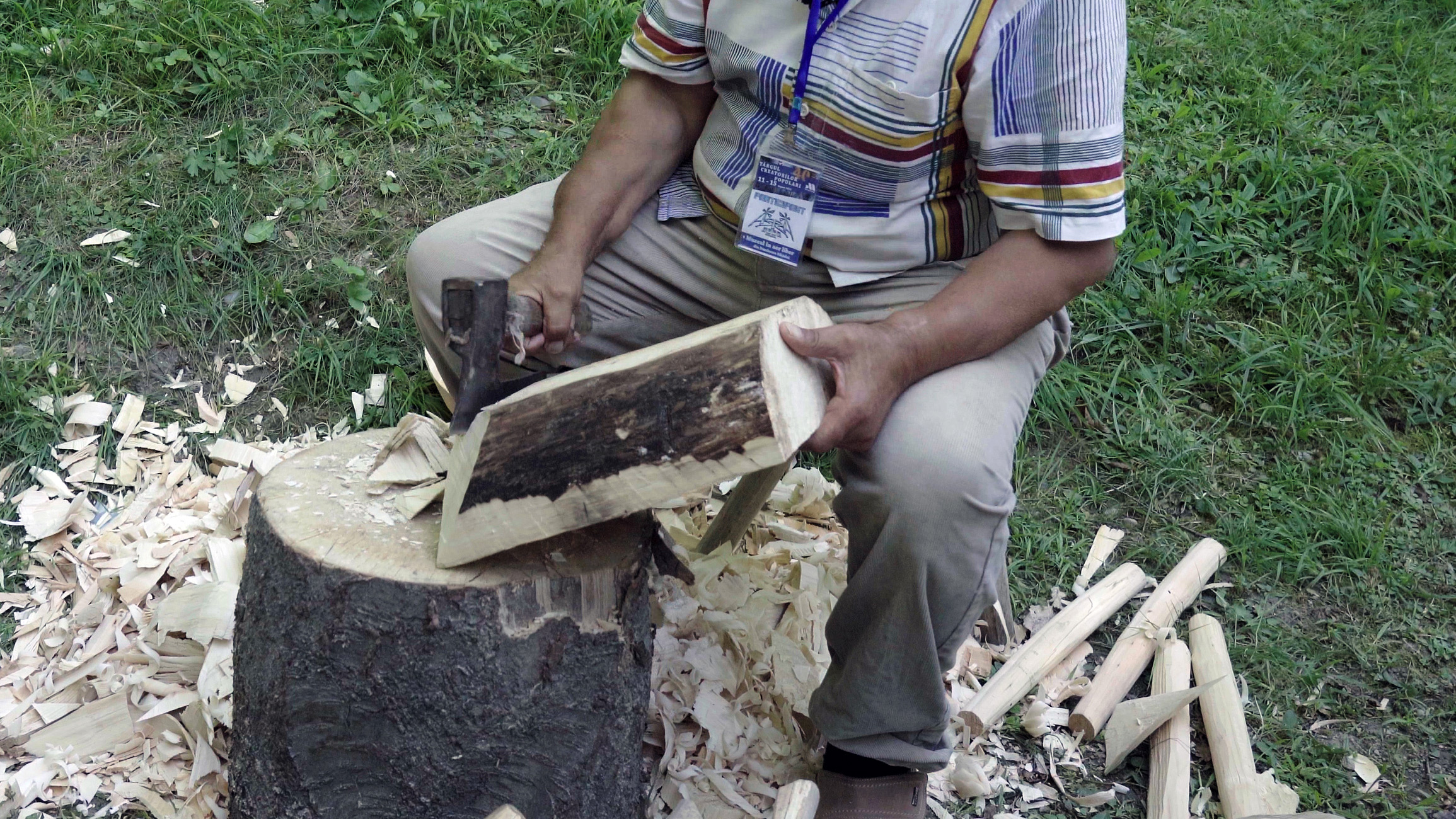
Number and name of the phase:
3. Carving the outside
Description of this phase:
Carving the outside with the ax to shape it
Time: 10 min
Tools used in this phase: Axe
Materials used in this phase:
Soft wood freshly cut (willow, linden tree, acacia)
Phase 4
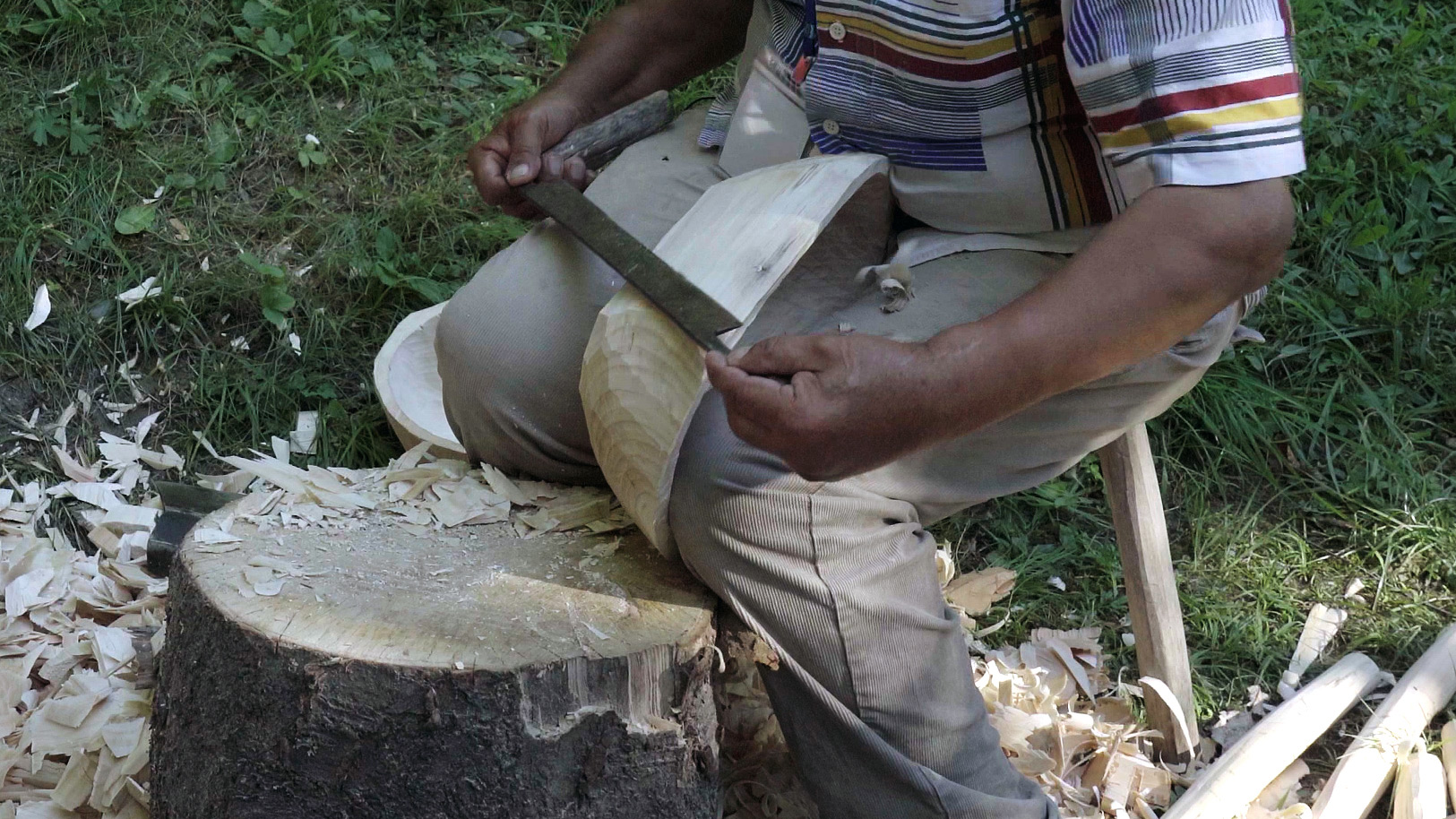
Number and name of the phase:
4. Finish the outside
Description of this phase:
Finish the outside with the drawknife and with the knife if it is the case
Time: 15 min
Tools used in this phase:
Knife, Drawknife
Materials used in this phase:
Soft wood freshly cut (willow, linden tree, acacia)
Does the crafter model this craft activity on historical or archaeological sources: No
Did the crafter diverge from historical/archaeological accuracy to adapt the process: ...
Has the crafter developed new techniques or improved the activity over time: ...
Has the crafter identified any gaps in their knowledge or experience: ...
Describe the crafter's approach to a tidy workshop, hygiene and other best practices:
There are special places in the workshop to store the tools, the pieces of raw material and the finished products that are let to get dry.
Describe the crafter's approach to clean-up and disposal of waste products:
The cleaning process take place at need that is when there are too many remains they are gathered.
Describe any by-products of the craft activity that could have further use:
The remains are used to lit the fire.
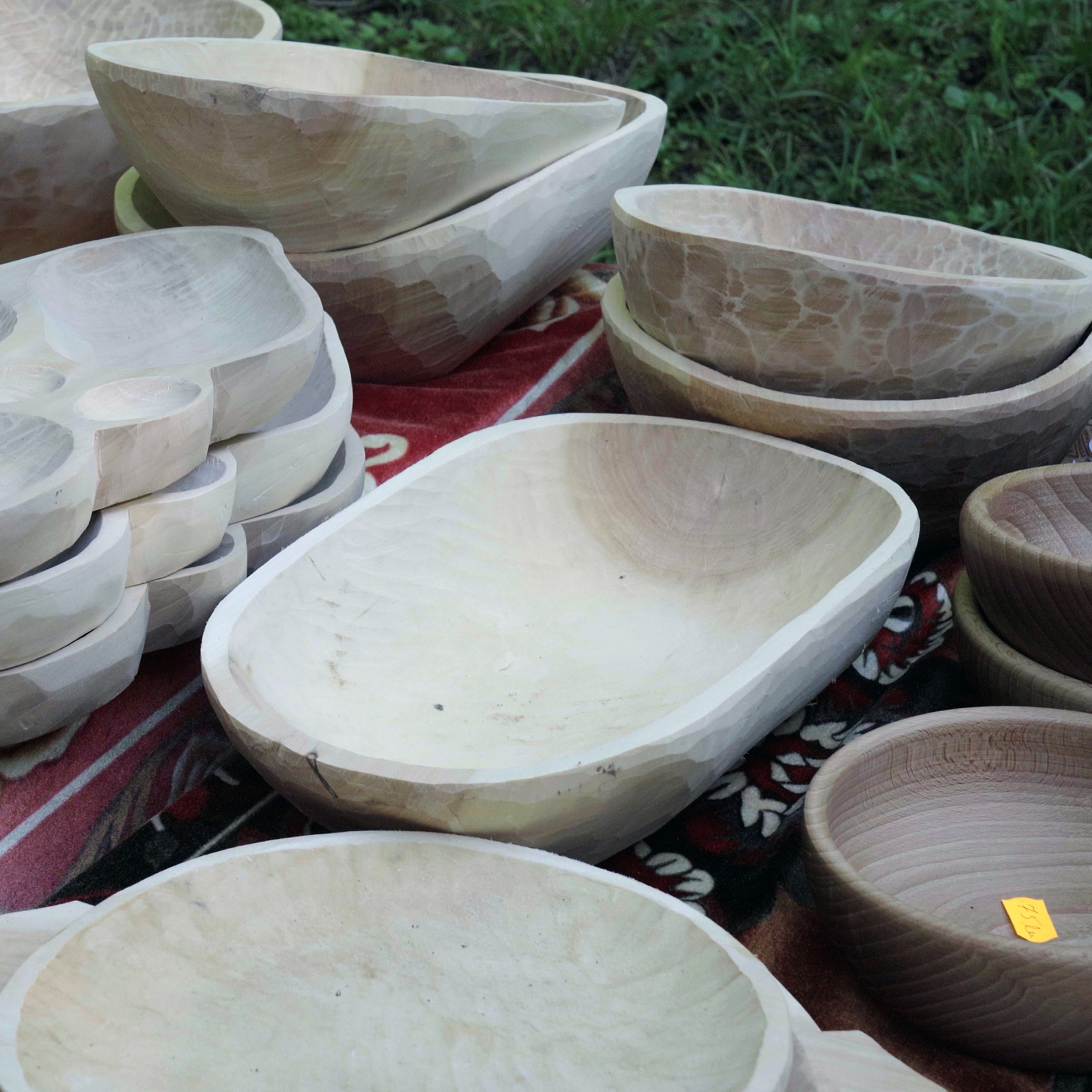
Through this craft, the following household products are made: wooden bowls, wooden trays, cutting boards, spoons. The products are mainly meant to be used day by day in the kitchen.
Name of the product in English: Wooden bowl
Name of the product in local language: Găvan
Describe the product:
Ellipsoidal hollow bowl
What are the outcome or product's purposes:
Practical use
Describe how the product or outcome is used:
To preserve and to serve different produce
Describe who typically uses the product or outcome:
Anyone that desires a traditional plating
In which context is the product or outcome typically used:
In any circumstance: to preserve or serve the produce both at home and at restaurants with traditional design
What happens with the product or outcome? Is it distributed and how:
Sale
How does the product or outcome reach the user:
Shops, Markets / Fairs, From the workshop

